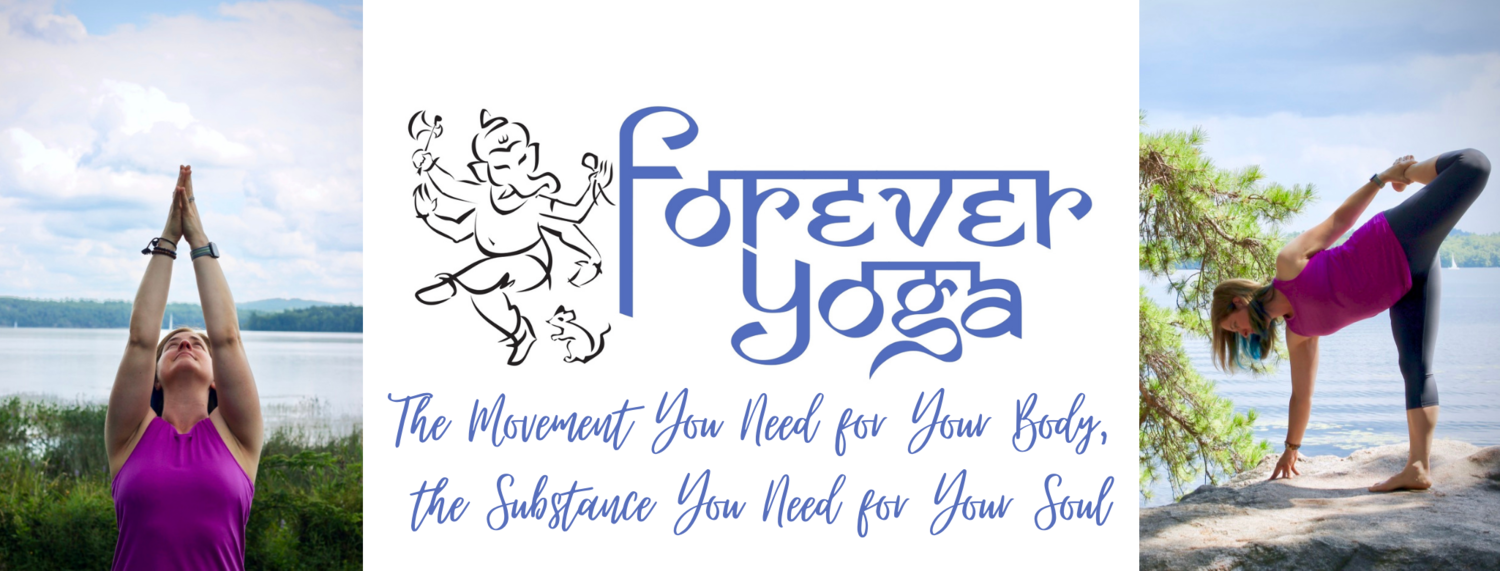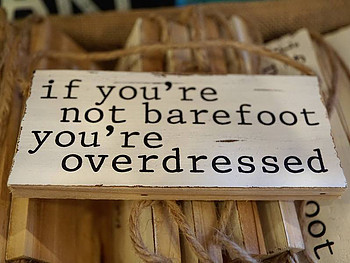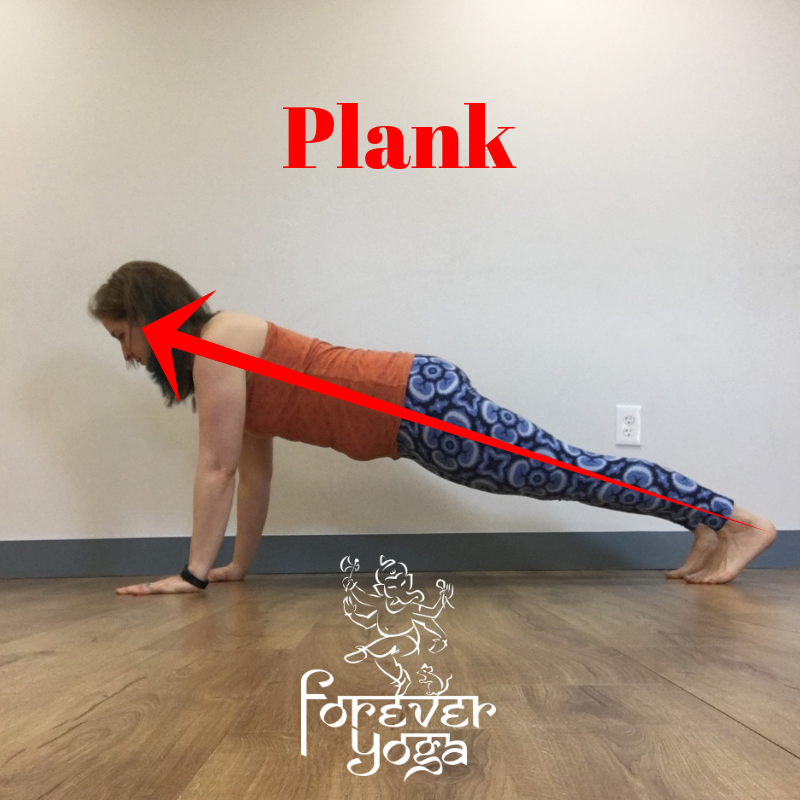Exercising Barefoot
/To a yoga practitioner, exercising barefoot is a matter of course. It helps keep us from sliding around on the mat, gives us better connection to the earth and creates more flexibility and strength in our feet. We probably don’t even think about the fact that we’re doing something that you don’t typically do in most other forms of exercise. But have you considered that you might be able to find benefits from being barefoot in other forms of exercise? Learn more with today’s guest blogger, Laurie Gouley, Creator of The Dalai Nala!
Have you ever exercised barefoot? You may be thinking, with all the super cool sneakers on the market that "support your arches" or "absorb impact" why would we ever workout barefoot? But that is exactly why we should workout barefoot. Wearing those fancy shoes have made our feet and ankles weak.
Of course going barefoot is not for everyone. If you have diabetes, open sores, numbness in your feet, a contagious foot disease or poor circulation, going barefoot is really not recommended.
However, most of us learned how to walk barefoot and spent lots of time as a child barefoot. We have grown accustomed to shoes but it is a very liberating feeling to be without shoes. It's so freeing!
Think about when you were small and outside barefoot in the grass. How did it make you feel? When I remember that, I get a happy feeling. There is an actual name for this! It's called, earthing. Earthing means walking barefoot on soil, grass or sand (meaning: any natural surface). Sorry this doesn't include sidewalks. :)
A review published in the Journal of Environmental and Public Health looked at a number of studies that highlight how drawing electrons from the earth improves health. In one, chronic pain patients using grounded carbon fiber mattresses slept better and experienced less pain.
Another study found that earthing changed the electrical activity in the brain, as measured by electroencephalograms. Still other research found that grounding benefited skin conductivity, moderated heart rate variability, improved glucose regulation, reduced stress and boosted immunity.
One particularly compelling investigation, published in The Journal of Alternative and Complementary Medicine, found that earthing increases the surface charge of red blood cells. As a result, the cells avoid clumping, which decreases blood viscosity. High viscosity is a significant factor in heart disease, which is why so many people take blood thinning aspirin each day to improve their heart health. Another study in the same journal found that earthing may help regulate both the endocrine and nervous systems.
Most shoes act as a crutch, thus contributing to foot and ankle dysfunction.
Going barefoot improves bio-mechanics, strengthens the foot (ligaments, tendons and muscles), lengthens the Achilles tendon, and enhances coordination and balance. Going barefoot strengthens the stabilizing muscles of the foot and ankle and makes them stronger. It us true that shoes give a lot of stability and support, however, this is what makes the foot and ankle lazy. Strengthening the small stabilizing muscles of the feet can improve our balance and overall sports performance. Improving foot and ankle function will do wonders for movement mechanics, particularly in the hips and lower torso.
Going barefoot can improve our proprioception. Proprioceptors are sensors that provide information about joint angle, muscle length, and muscle tension, which is integrated to give information about the position of the limb in space. The way that we can tell that an arm is raised above our head, even when our eyes are closed, is an example of proprioception.
Going barefoot helps us to feel and connect us to our environment and this helps our balance and develops our natural movements. While it may seem the padding of shoes will reduce the impact on your feet and legs, in fact it may increase it since your proprioceptive system depends on feedback to adjust to impact and the padding can cause you to impact harder to activate it.
No stinkies! Bare feet do not naturally stink. The sweat glands in the feet are just like the sweat glands in the hands. Feet will only stink after being cooped up in shoes for hours.
Benefits for athletes! Athletes who train barefoot have amazing results and experience fewer injuries. No matter how strong, powerful, mobile, agile, fast, or explosive an athlete is, correcting these foot and ankle deficiencies will only improve upon their pre-existing bio-motor capabilities as well as reduce their risk for injuries.
(There are 5 bio-motor abilities. They are strength, endurance, speed, flexibility, and balance or coordination.)
An example why doing a lunge bare foot is better - To properly perform any variation of a lunge (front, reverse, walking, or lateral), first and foremost, you need balance. Performing them barefoot allows you to grip the floor with your entire foot—your toes, the balls of your feet, and your heels—for maximum stability. A sneaker would impede that ability.
While there are many benefits of going barefoot; don't just jump right in with both feet. :)
Train up to it just like you would with anything. After all we spend most of our lives in shoes now so our feet and ankles have weakened! Slowly transition. Your feet will be tender for awhile, so don’t do a whole workout right away.
Give your feet time to adjust. Begin with a barefoot warm-up for a couple of weeks. Slowly increase the number of exercises or drills you do without sneakers. If your gym doesn’t condone barefoot training, try minimalist footwear.
Take your shoes off when you’re in your house or sitting at your desk, too. You can also roll a tennis ball under your arch, and flex and point your toes to strengthen all the muscles in your feet.
I’m a huge believer in barefoot training just for the foot-strengthening and injury-prevention benefits alone!
"But, what if I drop a weight, Laurie?!"
Let's face it...if you are worried about a weight dropping on your foot, your sneaker is not going to do much to save you. Either way it will suck if that happens. So use caution. :)
If you're unable to perform a majority of your activities in barefoot or minimalist conditions, then you have foot and ankle deficiencies. Your feet & ankles will need to be re-trained. I will say it again, if you'd like to start barefoot training, ease into it slowly. The feet, ankles, and toes need to be trained just like any other body part. In fact, you could easily say they require greater emphasis considering most individuals wear shoes that limit, constrict, and bind their feet in unnatural positions, ultimately promoting dysfunction of the lower extremity.
Do you have blisters, corns, ingrown toenails, bunions, skin irritations of the feet, and calluses? Most of these can be traced back to either poor footwear, improper foot and ankle mechanics, or a combination. Most of these are a result of placing uneven pressure on various locations of the feet, a common result of faulty foot mechanics.
But remember whether you choose to workout with shoes or not, be sure to pay attention to any signs of discomfort in your toes, arches, heels, or ankles, and consult your physician if you feel abnormal pain or discomfort.
Do you dare to go bare?
Thank you Laurie! Check out the original posting here.



















